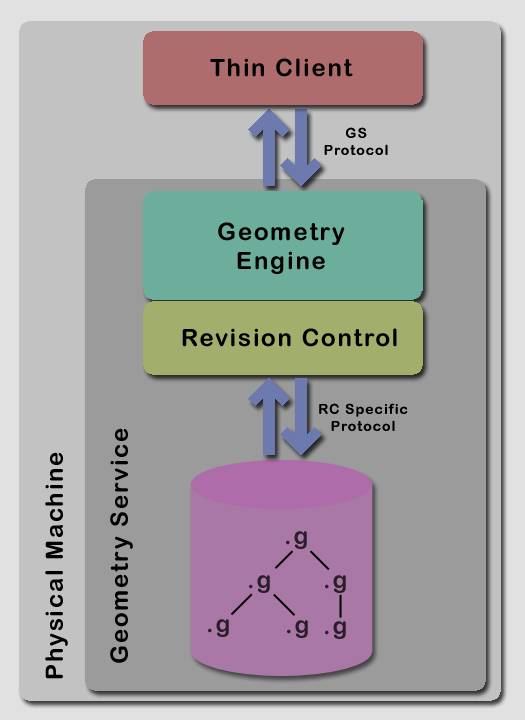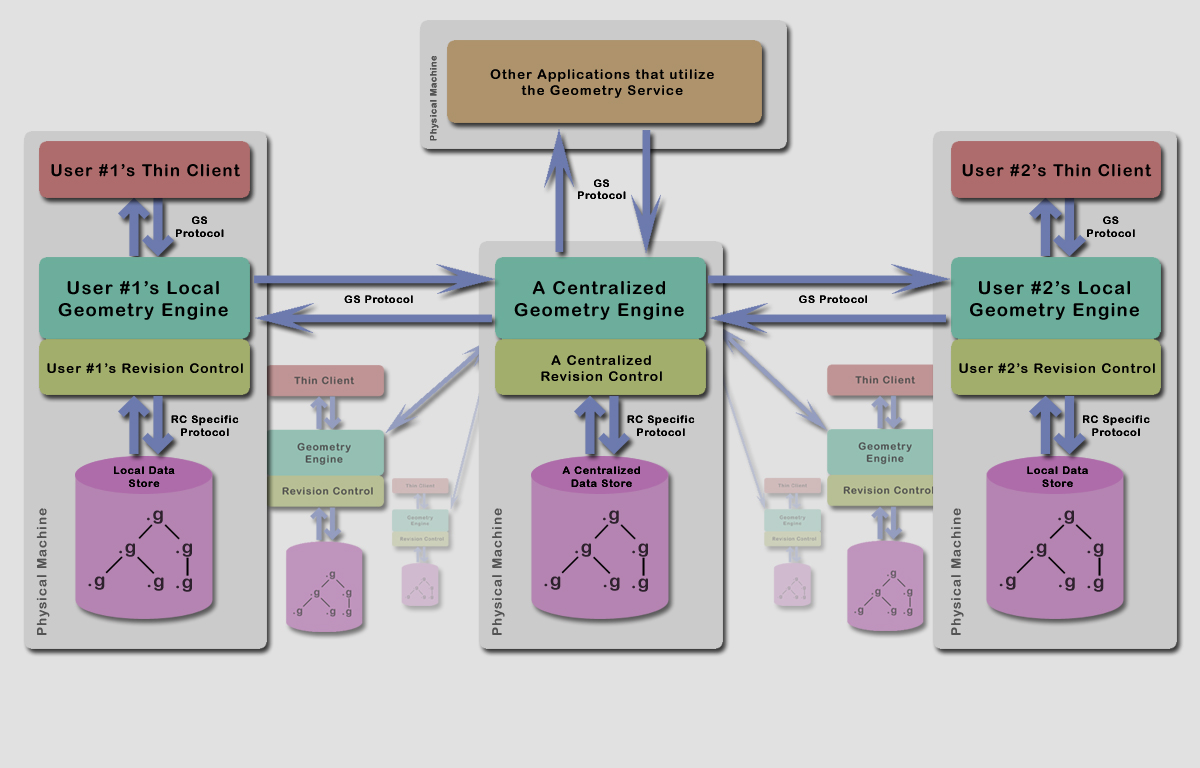Difference between revisions of "GS Dev Requirements"
From BRL-CAD
(New page: ---- =Geometry Service Requirements= *Geometry versioning: revision history of geometry changes such as who did what to the model and for which analysis, when changes were made, by whom,...) |
|||
| (6 intermediate revisions by one other user not shown) | |||
| Line 1: | Line 1: | ||
| + | {{DesignDocument}} | ||
| + | |||
---- | ---- | ||
| Line 8: | Line 10: | ||
*Programmable access-controlled interface that utilizes reuseable code for consistent end-to-end access to geometric data. | *Programmable access-controlled interface that utilizes reuseable code for consistent end-to-end access to geometric data. | ||
*Dynamic geometry | *Dynamic geometry | ||
| − | * | + | *Geometry articulation and editing constraints |
*Unified repository of geometry in one storage location. | *Unified repository of geometry in one storage location. | ||
*Reuse of identical geometry parts (single instancing). | *Reuse of identical geometry parts (single instancing). | ||
*Improved/advanced collaboration. | *Improved/advanced collaboration. | ||
| − | |||
<br /> | <br /> | ||
<br /> | <br /> | ||
| Line 21: | Line 22: | ||
*Thin Client | *Thin Client | ||
**Any Language | **Any Language | ||
| − | **Communicates with Geometry Engine via GS Protocol | + | **Provides: |
| + | ***Communicates with Geometry Engine via GS Protocol | ||
| + | ***Gui Interface | ||
| + | **[[GS Dev Thin Client Requirements]] | ||
| + | |||
<br /> | <br /> | ||
*Geometry Engine | *Geometry Engine | ||
| Line 31: | Line 36: | ||
***Communications with external Geometry Engines | ***Communications with external Geometry Engines | ||
***Communications with external Geometry Repositories | ***Communications with external Geometry Repositories | ||
| + | ***Communications with any other application that implements the GS Protocol | ||
| + | **[[GS Dev Geometry Engine Requirements]] | ||
| + | |||
| + | <br /> | ||
| + | <br /> | ||
| + | |||
| + | =Visual Conception= | ||
| + | |||
| + | <center> | ||
| + | <br /> | ||
| + | [[Image:GS Concept local.jpg]] | ||
| + | <br /> | ||
| + | A Thin Client connected to a Geometry Service, all running on one physical machine | ||
| + | |||
| + | |||
| + | <br /><br /><br /> | ||
| + | [[Image:GS Concept Multi med.jpg]] | ||
| + | <br /> | ||
| + | Thin Clients connected to Geometry Services, each running on independent physical machines, but connected to a 'headless' Geometry Service. The 'headless' geometry service also serves other enterprise level applications. | ||
| + | <br /> | ||
| + | </center> | ||
| + | <br /><br /><br /> | ||
| + | <br /><br /><br /> | ||
| + | <br /><br /><br /> | ||
Latest revision as of 10:55, 28 May 2008
Geometry Service Requirements[edit]
- Geometry versioning: revision history of geometry changes such as who did what to the model and for which analysis, when changes were made, by whom, etc.
- Direct association of stored geometry with external data
- Multi-user access controls that allow multiple people to work on the same models at the same time
- Programmable access-controlled interface that utilizes reuseable code for consistent end-to-end access to geometric data.
- Dynamic geometry
- Geometry articulation and editing constraints
- Unified repository of geometry in one storage location.
- Reuse of identical geometry parts (single instancing).
- Improved/advanced collaboration.
Identified Executables[edit]
- Thin Client
- Any Language
- Provides:
- Communicates with Geometry Engine via GS Protocol
- Gui Interface
- GS Dev Thin Client Requirements
- Geometry Engine
- C++
- Provides:
- Geometry Management (via SVN)
- Geometry Conversion, Import, Export
- RayTracing
- Communications with external Geometry Engines
- Communications with external Geometry Repositories
- Communications with any other application that implements the GS Protocol
- GS Dev Geometry Engine Requirements
Visual Conception[edit]

A Thin Client connected to a Geometry Service, all running on one physical machine

Thin Clients connected to Geometry Services, each running on independent physical machines, but connected to a 'headless' Geometry Service. The 'headless' geometry service also serves other enterprise level applications.